Review on Optimization and Fusion of Seismic Attributes for Fluvial Reservoir Characterization
-
摘要: 地震属性分析已广泛应用于河流相砂体预测并取得良好效果.地震属性分析技术主要包括属性提取、属性优选与属性融合,总结了河流相砂体预测中常见的地震属性提取方式、优选及融合方法,分析了由围岩干扰、地震分辨率限制导致的属性提取与分析误区,阐述了不同属性优选与融合方法的优缺点、适用条件与发展前景.总体而言,基于线性模型的地震属性融合提升效果较差,适用于少井区域;基于非线性模型的属性融合效果较好,但仅适用于钻井较多的地区,如油气开发阶段;无监督智能属性融合可应用于无井或少井区域,是未来无井或少井条件下属性融合的重要发展趋势之一.同时,重点阐述了新提出的分频属性融合与降低围岩干扰的属性融合方法.Abstract: Seismic attribute analyses have been applied widely in hydrocarbon exploration and development of fluvial reservoirs, and obtained good results. The analysis procedure of seismic attributes mainly includes the extraction, the optimization and the fusion of attributes. In this paper it summarizes the main methods of attribute extraction, optimization and fusion, and evaluates their advantages, disadvantages and application conditions. Besides, the common misunderstanding genetically related to seismic resolution and interference of neighboring zone in attribute extraction is also analyzed. Generally, fusion methods of seismic attributes using linear models cannot significantly improve the results, and are suitable for areas with several or a few wells; fusion methods with intelligent models (mainly for supervised learning) are commonly suitable for the areas with dozens of wells, such as areas within oil development stage. Fusion methods based on unsupervised learning are suitable for areas with few and even no wells, which have an optimistic development prospect since they can make full use of the seismic information, and are not limited by wells. In addition, the new fusion methods of frequency-decomposed attributes, and of attributes from target and neighboring zones are also summarized in this paper.
-
Key words:
- fluvial reservoir /
- seismic attribute /
- attribute optimization /
- attribute fusion /
- machine learning /
- sedimentology
-
0. 引言
河流相储层在全球各大油田广泛发育,如加拿大Alberta盆地、苏丹Melut盆地、马来西亚盆地、尼日利亚盆地(Miall,2002;McHargue et al.,2011;Yousef et al.,2021)等区域均钻遇大量河流相储层.尤其是我国油气资源以陆相碎屑岩储层为主,河流相储层占比最高,占总开发储量的42.6%(徐安娜等,1998),如渤海湾盆地、松辽盆地、塔里木盆地、四川盆地等均发现大量河流相油气储层(胡光义等,2014;岳大力等,2018a;张锡楠等,2020;李胜利等,2022),具有重要经济价值与战略意义.
在众多河流相储层预测方法中地震属性作为一种便捷、可靠的地震数据解释技术与方法,已普遍应用于储层预测,取得良好效果(印兴耀和周静毅,2005;McArdle et al.,2014;张宪国等,2014;樊晓伊等,2018).地震属性指地震数据经数学变换得到的关于地震波几何学、运动学、动力学及统计学特征的特殊度量(Chen and Sidney,1997;Chopra and Marfurt,2005).研究表明,地震属性通常能够突出地震波的一种或几种特征参数(Chen and Sidney,1997),即突出地质体某方面的地球物理响应特征,比如相干类属性突出反映地层在横向上的连续性,有助于识别断层、砂体边界等信息(Wang et al.,2017;Li et al.,2019a);振幅类地震属性能够突出波峰或波谷的反射强度,对砂体厚度等信息比较敏感(王彦仓等,2013;Yue et al.,2019);频率类属性能够突出地震频率的大小与空间变化,有助于反映地层结构、沉积旋回与砂泥互层(Zeng,2010a;胡光义等,2014).显然,根据储层预测目标与地震属性的物理意义,选取适合的地震属性是储层预测成功的关键(Barnes,2007;国景星等,2018;Li et al.,2019b).
尽管地震属性能够有效突出某一方面的地球物理信息,增强地震数据的储层预测能力;但在属性突出某一方面的地球物理信息的同时必然导致其他方面地球物理信息的削弱甚至忽略,难以全面反映原有地震信息,即地震属性具有明显的局限性(Chopra and Marfurt,2005);此外,地震属性仍然面临地震解释中的普遍难题,即地震属性的多解性(王彦仓等,2013).鉴于地震属性的局限性与多解性,众多学者始终致力于两方面的研究以提高地震属性的解释精度:一是研发新型地震属性(Chen and Sidney,1997;Hart,2008;李伟等,2017);二是探索多种地震属性融合的方法(McArdle et al.,2014;Bitrus et al.,2016;Wang et al.,2017;Zeng,2018).目前,地震属性种类众多(已超过200种),新型地震属性与已有属性的区分度越来越小;尤其是在河流相储层预测方面,近年来几乎没有报道过具有明显优势的新型地震属性(印兴耀和周静毅,2005;Barnes,2007;李小霞,2014;钟晗,2018).相反,在探索多属性融合技术或方法方面,取得一系列新进展(McArdle et al.,2014;Maleki et al.,2019;Yue et al.,2019;张宪国等,2021).
鉴于此,本文系统梳理了针对储层预测的地震属性优选与融合方法,分析了各种方法的优缺点及适用条件,重点阐述了近几年提出的、具有良好效果的新型地震属性融合方法,探索了多属性融合的发展趋势(Bitrus et al.,2016;Zeng,2017,2018;Yue et al.,2019;Li et al.,2021).显然,总结近期研究进展、思考未来发展趋势,不仅有利于推动地震属性融合方法的发展完善,而且有助于河流相储层表征,特别是薄层砂体的预测与解剖.
1. 河流相储层地震属性的提取与优选
基于地震属性的呈现形式(或提取对象),可分为剖面属性、平面属性与体属性;伴随着三维地震数据的推广,平面属性与体属性已成为主流(Carter,2003;李婷婷等,2015).地震层属性与体属性在提取方式上略有差别、但本质一致(王彦仓等,2013).由于地质体的横向规模通常远大于纵向规模(裘亦楠,1992;Zeng,2010b;Colombera and Mountney,2020),地震层属性在地震地貌学、砂体预测等领域的应用最为广泛.地震体属性亦常以地层切片的方式呈现,此时也可归为地震层属性的范畴(Bitrus et al.,2016;Zeng,2018).因此,本文主要以地震层属性为例(下文简称地震属性),综述针对河流相砂体预测的地震属性优选与融合方法.
1.1 地震属性提取
(1)等时地震层属性提取方式. 河流相地层具有等时性,因此具有等时性的地震层属性才具有地质意义,即等时性的地震属性是刻画储层分布的关键(Zeng,2018).河流相地层以砂岩与泥岩为主,具有整体等厚的特点,故而常见的等时地震层属性提取方法主要包括3种:层间属性、沿层属性、地层切片属性(时间切片不具等时性,不做介绍)(Zeng,2010b;钟晗,2018).层间属性指以地震层位作为顶、底界面,通过数学变化提取的地震属性(图 1a).沿层属性指以单一地震层位为顶界面(或底界面),选取时窗提取该层位下部(或上部)时窗范围内的地震属性(图 1b,1c);值得注意,该属性提取方法仅适用于整体近似等厚的地层发育样式,如河流相地层.此外,广义的层属性包括了地层切片属性(又称地层属性切片),指采用地层切片的方式从三维地震体属性中提取的属性切片(图 1d)(Zeng,2018).
显然,地震层位的可靠性与时窗选取的合理性,是影响地震层属性等时性与准确性的关键因素.地震层位的等时性与精度,直接决定了地震属性的等时性(Zeng,2018);时窗选取的合理性决定了地震属性与地层厚度的匹配程度(Li et al.,2020).鉴于此,地震属性提取过程中应遵循以下原则(王彦仓等,2013;李伟等,2017;Li et al.,2020):
① 如果能够同时追踪顶、底地震界面,应按照准确的顶、底界面提取层属性(图 1a).
② 如果仅有目的层顶(底)界面,应该按照地层厚度与地震波速度计算时窗,沿顶(底)界面向下(向上)提取时窗内的地震属性,确保地震属性的提取范围尽可能与目的层对应(图 1b~1c).
③ 当地层厚度变化较大时,避免选取平均时窗,应根据地层厚度的平面展布建立时间厚度图,以该时间厚度图作为地震属性提取的时窗.
④ 地震属性提取的时窗大小与地震资料主频、属性种类相关,不宜过大或过小,建议不小于1/4 λ(波长);时窗上限与属性种类有关,不能一概而论;但多数振幅类属性的时窗或层间厚度在1/4λ ~ λ之间时储层预测效果较好(钟晗,2018;Li et al.,2020).
(2)常见误区. 河流相储层中,相邻地层中常常发育多期河道砂体,在地震反射中相邻地层中的砂体彼此干扰(Armitage and Strigh,2010;Li et al.,2020).实际上,地震正演表明地震响应会延伸至地质体外部一定区域(图 2,一般为1/4 λ),该延伸区域与地震子波形态有关,常见子波的地震响应主要延伸至地质体外部1/4 λ区域(图 2c)(Bakke et al.,2013;Li et al.,2021).换言之,地震反射是地震分辨率范围内地质体的综合响应(Chopra and Marfurt,2005;Li et al.,2020).因此,层属性或地层切片的分析必须注意以下3点:地震属性存在围岩干扰的假象(图 2);考虑地质体地震响应的延伸范围与围岩干扰作用(图 2a~2c),提取属性的时窗可以略大于或略小于实际地层厚度,以与测井解释匹配度为准;尽管地层属性切片为瞬时切片,但反映的是地震分辨率范围内(约1/4 λ)地质体的综合地震响应,而非某一瞬间的古地貌特征(Li et al.,2021).
 图 2 基于地震正演模拟的围岩干扰分析图据 Li et al.(2021).a. 地质正演模型;b. 地震正演模型;c. 常见地震子波;d. 上、下围岩干扰层示意图Fig. 2. Analysis diagrams of interference from neighboring zones based on seismic forward modeling
图 2 基于地震正演模拟的围岩干扰分析图据 Li et al.(2021).a. 地质正演模型;b. 地震正演模型;c. 常见地震子波;d. 上、下围岩干扰层示意图Fig. 2. Analysis diagrams of interference from neighboring zones based on seismic forward modeling1.2 地震属性优选
狭义的地震优选(不包括属性优化或融合)指从众多地震属性中,优选出对目标储层最为敏感的一种或几种属性.在储层预测方面,常见的地震属性选择方法如下(印兴耀和周静毅,2005;王开燕等,2013;李小霞,2014):
(1)专家经验法.基于专家知识与经验选择对储层较为敏感的地震属性.该方法带有显著的主观性,通常与其他选择方法配合使用(李小霞,2014).
(2)基于地质模式的图形法(俗称相面法). 地质体通常具有特定的几何形态与一定的空间分布规律,即地质模式.因此,通过分析地震属性的分布特征(几何形态、组合关系与分布规律等),优选出符合储层分布模式的地震属性(Hart,2008;McArdle et al.,2014).该方法通常结合专家经验法,在缺少钻井的区域应用极为广泛,如油气勘探阶段.
(3)数学分析法. 即通过数学分析方法优选出对目标储层最为敏感的属性,常见的数学理论分析方法包括相关性分析法、贡献量法、决策分析方法、模拟退火法、聚类分析法、粗糙集理论法、神经网络法、遗传算法等;其中,最常见、最简便的方法是通过相关性分析选择与测井解释相关性最高的地震属性(印兴耀和周静毅,2005;钟晗,2018).该方法多应用于有井钻遇的区块,本质是通过某种数学方法实现测井信息对地震信息的标定与优选.
1.3 地震属性的局限性与多解性
一种地震属性难以反映储层的整体特征,存在明显的局限性.如振幅类属性对岩性、溶洞、储层厚度等特征较为敏感(岳大力等,2018b);频率类属性对砂泥互层的程度、沉积旋回、大尺度地层韵律、含油气性等较为敏感(Zeng,2010b;胡光义等,2014);相位结构类属性对断层、岩性边界等较为敏感(罗登贵等,2017;Wang et al.,2017).因此,应该针对表征目标优选多种地震属性,以期全面、客观地完成储层预测(印兴耀和周静毅,2005).
地震属性具有多解性,主要表现在2个方面:一是不同的地质现象可能存在高度相似的地震属性响应特征,如强振幅响应可能是不整合、碳酸盐岩、火成岩、煤层等地质现象,故而导致地震属性的多解性(Armitage and Stright,2010);二是由于分辨率的限制、围岩干扰、振幅与频率的调谐现象等因素导致地震属性的地质解释存在多解性(Raef et al.,2016;李伟等,2017),如调谐现象会导致不同厚度的砂体在地震属性上呈现相近的振幅值与频率值,又如较强的振幅响应可能源于目的层的砂体或相邻层围岩层的干扰(Li et al.,2020,2021).
2. 针对河流相储层预测的地震属性融合方法
“地震属性融合”是一种常用的属性分析手段,指经过一定数学运算将多种地震属性融合在一起的过程,旨在综合利用不同属性的物理意义或统计学意义使融合结果更全面、可信地反映地质体特征(Dorrington and Link,2004;Chopra and Marfurt,2005;李婷婷等,2015).在河流相砂体预测中,多属性综合分析是改善地震属性局限性、降低多解性的关键,其中地震属性融合是应用最有效、最广泛的多属性分析手段(刘文岭等,2002;张宪国等,2021).地震属性融合的本质是去除冗杂、重复信息,融合有效信息.属性融合方法众多,其中针对储层(砂体)预测的融合方法大致分为线性融合、非线性融合与颜色融合(Dorrington and Link,2004;王开燕等,2013;宋建国等,2016);此外本文对近年来新提出的、有别于传统属性融合的新方法单独介绍.
2.1 地震属性线性融合与适用条件
地震属性线性融合方法由来已久,即在属性降维基础上通过某种线性算法或模型,将多种算法进行融合,以提高储层的预测精度.在储层预测方面,常见的线性融合方法如下(印兴耀和周静毅,2005;王彦仓等,2013):
(1)聚类分析与多元回归.对初步选择的多种地震属性进行聚类分析,从每一类属性中选择最佳的一种属性(图 3a);继而与测井解释进行多元回归分析,最后根据回归方程实现多属性融合(图 3b;王彦仓等,2013).
(2)主成分分析与多元回归.采用主成分分析方将地震属性转化成几种主成分;然后与测井解释进行多元回归分析,最后将主成分融合得到融合属性(钟晗,2018).
(3)逐步回归.依据测井解释,对多个属性进行逐步回归分析(该方法逐步替换贡献较低的属性,即包括了属性降维),继而根据回归方程进行属性融合(Li et al.,2021).
上述地震属性线性融合方法需要测井数据作为多属性回归分析的依据,适用于有井区域;同时,线性模型较为简单,难以拟合复杂关系,对属性的改进效果一般,不建议应用于钻井较多的区域;即适用于有井且数量较少的区域(钟晗,2018).
2.2 地震属性智能(非线性)融合与适用条件
地震属性智能融合与线性融合的本质相似,即在去除属性冗杂信息的基础上(如主成分分析和聚类分析),采用更加复杂的非线性算法对地震属性进行融合,如支撑向量机、神经网络、遗传算法、退火模拟、决策树、随机森林等.尽管可供选择的算法众多,但应该根据储层解释目标与样本点数量选用适合的算法.总体而言,根据是否需要钻井数据提供监督可将属性智能融合分为有监督地震属性智能融合与无监督地震属性融合(图 4)(林年添等,2018;Yue et al.,2019;Ariza Ferreira et al.,2021).
(1)有监督地震属性智能融合. 监督学习算法是地震属性智能融合的主流(Yue et al.,2019;姚江凯和刘家豪,2020;张宪国等,2021).在井钻遇的区域,以测井解释的储层参数(如砂体厚度、沉积微相类型)作为监督数据,在测井解释与地震属性间开展井震联合监督学习;继而根据学习结果将多种地震属性融合(宋建国等,2016;林年添等,2018).该融合属性代表的地质含义通常和参与学习的测井参数一致.如秦皇岛32-6油田河流相储层,对均方根振幅、最大峰值振幅、平均瞬时频率3种属性通过监督学习进行智能融合,监督数据为测井解释的砂体厚度,即融合结果可视为地震属性预测的砂体厚度(图 3c).该方法能够整合复杂的地震属性,且有井参与学习,融合效果好、可靠性高.然而,该方法仅适用于有井区域,且钻井越多融合效果越好.
(2)沉积模式约束下的无监督地震属性智能融合. 在缺少钻井的区域,通过非监督机器学习对多种地震属性融合,即通过机器学习自动探索地震属性呈现的特征与规律(林年添等,2018;Zhang et al.,2022;Zhao et al.,2018).无监督算法能更全面、更深入地挖掘地震信息,实现真正意义上的深度学习,因此该融合属性能够较客观、全面地反映储层内部的地球物理响应差异与规律(姚江凯与刘家豪,2020;La Marca and Bedle,2022),如将均方根振幅、最大峰值振幅、平均瞬时频率3种属性通过无监督学习进行智能融合,融合结果将属性划分为4类(图 3d).由于缺少测井信息的标定,该结果可靠性低、多解性强,必须要在沉积模式的约束下对融合属性的分布特征加以分析;如河流相沉积背景下,属性高值条带应为河道砂体,且中部厚度大,即红色与黄色代表中厚层砂体,绿色代表薄层砂体,灰色代表泥岩(图 3d);此外,如果研究区有钻井数据,由于井数据未参与学习,可作为“盲井”对融合结果进行检验.
该方法的突出优势是无监督学习不受井点限制,能够利用所有地震数据进行机器学习,充分发挥深度学习的优势,更全面、更深入地挖掘地震属性信息(Ariza Ferreira et al.,2021);缺点也尤为突出,即融合结果多解性强、可靠性差,需要根据沉积模式或盲井进一步分析、检验;目前,非监督学习的地震属性融合尚不成熟、未得到广泛应用(姚江凯与刘家豪,2020;Ariza Ferreira et al.,2021;La Marca and Bedle,2022).
2.3 地震属性颜色融合与适用条件
20世纪70年代,彩色显示开始应用于地震数据成像与分析领域(Balch,1971);到21世纪初,基于成像技术的多属性颜色融合技术已逐渐成熟,即将地震属性赋予不同颜色,然后采用某种颜色模型(如RGB、HLS颜色模型)将多种属性进行颜色融合(Stark,2006;Guo et al.,2008).其中,RGB三原色融合模型最具代表性、应用最广泛,即分别采用红(Red)、绿(Green)、蓝(Blue)各代表一种地震属性,然后将3种属性进行颜色叠加,实现多属性融合(Bitrus et al.,2016;Zeng,2017).RGB颜色融合仅适用于3种地震属性,因此该方法常与聚类分析或主成分分析联合使用,即首先通过聚类分析或主成分分析从多种地震属性中优选3种属性或3种主成分,然后进行RGB颜色融合.在数学意义上,RGB颜色模型属于线性模型(Stark,2006),因此广义上属于多属性线性融合的范畴(Zeng,2017).
此外,基于透明度的颜色融合也比较常见,即将一种属性通过设置透明度的方式叠加到另一种属性图上(Wang et al.,2017;Li et al.,2020),如相干属性与均方根振幅属性叠合(图 5),图中分频融合的均方根属性能定量反映砂体厚度,相干属性能清晰展示砂体边界,即叠合属性能更好地刻画砂体的边界与厚度.
 图 5 基于颜色透明度的分频融合属性与相干属性叠合图(据Li et al., 2019a)Fig. 5. Map co-rendering the frequency-decomposed attributes and coherence attributes (Li et al., 2019a)
图 5 基于颜色透明度的分频融合属性与相干属性叠合图(据Li et al., 2019a)Fig. 5. Map co-rendering the frequency-decomposed attributes and coherence attributes (Li et al., 2019a)颜色融合不需要钻井数据,可应用于无井或少井区域;缺点是该方法本质是简单的颜色叠加而非数据融合,无法调整不同属性间的权重,亦无法实现砂体(储层)厚度定量预测(Bitrus et al.,2016).
2.4 针对储层预测的地震优化与融合新方法
河流相储层具有砂体厚度薄、相变快、垂向多期发育的特点(赵晓明等,2020;张宪国等,2021),导致地震反射围岩干扰明显、砂体厚度预测困难的特点(Miall,2002;McArdle et al.,2014).针对上述难题,近几年有学者提出了分频属性融合与降低围岩干扰的地震属性智能融合方法,在砂体预测中取得良好效果,得到广泛重视.与传统属性融合不同,“分频属性融合”强调了对地震数据不同频段的优选与分频属性的融合,能够有效突显不同厚度的砂体分布(李伟等,2017;Li et al.,2019b);“降低围岩干扰的属性融合”强调了通过对相邻层的同种属性进行融合以消除(或降低)围岩干扰(Li et al.,2020,2021).
2.4.1 分频地震属性融合
分频属性指从分频地震数据体中提取的地震属性(McArdle and Ackers,2012).最开始部分学者发现分频属性在某些特殊情况下能够更清晰地呈现储层分布(McArdle et al.,2014;Bitrus et al.,2016),考虑分频地震数据体信息不全、信噪比低、可靠性,并未引起业内广泛推广.李伟等(2017)提出了先优选地震数据频段再优选属性的分频段地震属性优选方法,深入论述了频段优选的理论基础与原则,为该方法在储层预测中的推广提供了理论基础与技术流程;同年,曾洪流提出了针对砂体预测的分频属性RGB融合方法(Zeng,2017).总体来说,高频属性分辨率高但调谐厚度小,适合预测薄层砂体;低频属性分辨率低但调谐厚度大,适合预测厚层砂体(李伟等,2017;Zeng,2017).之后,针对有井区域,为充分利用不同频段的地震属性以提高地震属性解释精度,逐渐形成了分频属性智能融合与砂体定量预测方法(Li et al.,2019b;Yue et al.,2019).
(1)基于智能算法的分频属性融合.①方法原理与意义.振幅与频率信息是反映砂体分布的重要信息(Chopra and Marfurt,2005;钟晗,2018).频率一定时,振幅随砂体厚度的增大先升高后降低,在砂体厚度1/4λ(调谐厚度)处达到最大,即调谐现象(李伟等,2017;Zeng,2017);频率越高,调谐厚度越小(图 6)(李伟等,2017;Li et al.,2019b).显然,同一振幅值通常对应两个砂体厚度,如图 6中归一化振幅值0.83对应A、B两处砂体厚度(3 m或7.5 m),存在多解性;但若同时考虑不同频率下的振幅值,即同时满足图 6中B、C两处振幅值,则有且仅有7.5 m的砂体厚度满足条件,降低了振幅解释多解性.此外,高频信息的分辨率高但调谐厚度小,适合预测薄层砂体;低频信息的调谐厚度大但分辨率低,适合预测厚层砂体(李伟等,2017;Zeng,2017);充分利用不同频段的地震信息,能够提高地震属性预测精度.因此,该方法既能降低地震属性的多解性,又能提高解释精度(Yue et al.,2019).
 图 6 不同频率地震子波的振幅与厚度相关关系(AVF曲线)(Li et al., 2019b)Fig. 6. Tuning curves between the sand thickness and amplitude with different frequency wavelets (AVF curve) (Li et al., 2019b)
图 6 不同频率地震子波的振幅与厚度相关关系(AVF曲线)(Li et al., 2019b)Fig. 6. Tuning curves between the sand thickness and amplitude with different frequency wavelets (AVF curve) (Li et al., 2019b)② 技术流程与应用实例.分频地震属性智能融合,指以井数据为监督,采用机器学习的方法对多个分频地震属性进行融合.该方法分为4步.(1)地震分频处理:在有效频带宽度范围内将原始地震数据体分解多个分频地震数据体(图 7a).分频过程必须遵守3个原则:分频地震数据的总频带宽度能够覆盖原始地震数据,确保有效地震信息不缺失;每个分频数据体具有较大的频带宽度,即维持较高的信噪比;分频数据体不宜过多,以免信息重复、冗杂(李伟等,2017).(2)地震属性优选:以测井解释依据,优选出对砂体较为敏感的属性(图 7b).(3)机器学习:在测井数据(监督数据)与地震属性间开展机器学习,建立非线性映射模型,即学习模型(图 7c).(4)属性融合:应用已建立的学习模型对多种分频地震属性进行融合;由于监督数据为砂体厚度,融合结果能定量反映砂体的平面分布(图 7d).实例表明,该方法既能有效提高地震属性的分辨率,又能降低地震解释的多解性.例如该方法较准确地预测了埕岛油田某河流相储层的砂体厚度(图 8a)(Li et al.,2019a,2019b).
 图 8 埕岛油田分频地震属性融合图a. 埕岛油田某小层分频属性智能融合图(Li et al.,2019b);b. 埕岛油田某小层分频属性 RGB 融合图Fig. 8. Maps of fused frequency-decomposed attributes in the Chengdao oilfield
图 8 埕岛油田分频地震属性融合图a. 埕岛油田某小层分频属性智能融合图(Li et al.,2019b);b. 埕岛油田某小层分频属性 RGB 融合图Fig. 8. Maps of fused frequency-decomposed attributes in the Chengdao oilfield该方法的优点在于能充分利用测井数据与不同频段的地震属性,既降低了地震解释的多解性,又提高了地震属性的分辨率,并实现了砂体的定量预测(Zeng,2017;Li et al.,2019b).但该方法亦有一定局限性,仅适用于有井钻遇的区域(Li et al.,2019b).
(2)基于RGB的分频属性融合.针对无井或少井区域,采用RGB颜色融合的方法,将低频、中频、高频地震属性进行颜色融合,通过颜色定性‒半定量地分析砂体的分布特征(Bitrus et al.,2016;Zeng,2017,2018),如图 8b将高、中、低频率的均方根振幅属性进行RGB颜色融合,其颜色可以定性地反映砂体分布与厚度.该方法的优点在于无需测井数据;缺点是RGB颜色融合为线性模型,精度改进小,融合结果是位图,无法实现砂体厚度定量分析(Wang et al.,2017;Zeng,2017).
2.4.2 降低围岩干扰的地震属性智能融合
前文已述(详见2.1节),地震属性会受到围岩的干扰(图 2a,2b),且干扰区域主要集中在目的层上下1/4λ区域,因此本文将目的层上下1/4λ区域定义为“围岩干扰层”(图 2c,2d).围岩干扰会导致地震属性存在大量难以区分的假象.围岩干扰现象本质上属于“薄互层”地震反射的范畴,内因是储层内部砂泥互层,外因是地震资料的分辨率(Armitage and Stright,2010;李国发等,2011;Bakke et al.,2013).单一河道带的厚度通常介于几米到十几米之间,且垂向多期发育,故而河流相储层必然存在砂泥“薄互层”现象(胡光义等,2014;张宪国等,2014;张昌民等,2020;孟玉净等,2021).在勘探开发初期,多以砂组(或油组)为储层表征目标,会将多个“薄互层”复合砂体作为一个整体进行预测(Carter,2003);而到开发中后期,需要对小层(甚至单层)级次的储层进行精细表征,此时垂向相邻的河道带砂体之间存在明显的围岩干扰现象(李国发等,2011;Li et al.,2020,2021).
为探究围岩干扰的特征与规律,设计如图 9所示地震正演模型.模型左侧为常见的围岩分布模式(图 9a~9e),包括上、下邻层均有厚层河道砂体(A段),上部邻层发育厚层砂体(B段),不发育围岩(C段),仅相邻层发育围岩(D段),相邻层发育薄层围岩(E段);模型右侧源于实际的河流相储层(F段).该模型正演结果表明,围岩的地震响应会对目的层产生显著干扰,仅根据目的层地震属性无法准确预测河道的分布,有必要降低围岩干扰(图 9b)(Li et al.,2020).
 图 9 河流相储层正演模型及其正演模拟结果据Li et al.(2020)修改;a. 地质模型;b. 地震正演模拟结果;c. 上部相邻层砂体厚度与RMS对比;d. 目的层砂体厚度与RMS对比;e. 下部相邻层砂体厚度与RMS对比Fig. 9. Forward geological model of fluvial reservoirs and its seismic responses
图 9 河流相储层正演模型及其正演模拟结果据Li et al.(2020)修改;a. 地质模型;b. 地震正演模拟结果;c. 上部相邻层砂体厚度与RMS对比;d. 目的层砂体厚度与RMS对比;e. 下部相邻层砂体厚度与RMS对比Fig. 9. Forward geological model of fluvial reservoirs and its seismic responses尽管围岩干扰比较复杂,但仍有一定规律可循.以RMS振幅属性为例,模型C段仅目的层发育河道砂体,目的层的RMS属性为高值,上、下相邻层为中等幅度值(图 9c~9d,③④区域);模型D段仅上部围岩层发育厚层河道砂体,RMS属性在上部层位高值,目的层为中等幅度值,下部相邻层无明显响应(图 9c~9d,⑤⑥区域).因此,在钻井数量较为充足的情况下,采用智能算法能够综合考虑目的层与相邻层的地震响应,能够排除部分围岩干扰做造成的假象,降低围岩的干扰(Li et al.,2020,2021).
该融合方法可归纳为4步.(1)地震属性优选,优选出对砂体较为敏感的属性(图 10a);(2)提取围岩干扰层与目的层的地震属性(图 10b);(3)通过机器学习,测井解释与地震属性(包括目的层与围岩干扰层)间建立非线性学习模型(图 10c);(4)最后应用该学习模型,将目的层与围岩干扰层的地震属性进行智能融合,将低围岩对目的层属性的干扰,实现属性优化(图 10d).
该方法在概念模型(Li et al.,2020)与实际地下工区(Li et al.,2021)均取得良好效果.以三维模型地震正演结果为例,该地震正演模型包括3个小层,自上而下依次为上部相邻层、目的层、下部相邻层(图 11a).三维地质模型中3个小层的实际砂体厚度如图 11b~11d所示,目的层中提取的RMS振幅属性如图 11c所示,显然目的层地震属性受围岩干扰十分严重,无法准确反映目的层砂体分布(对比图 11c与11e);但通过该方法对围岩层的地震属性干扰进行压制,有效降低了围岩干扰并提高了目的层地震属性的砂体预测精度(对比图 11c,11e,11f;Li et al.,2020).该方法的优点是有效降低了围岩对目的层地震属性的干扰,提高地震属性的储层预测能力;但需要有钻井作为监督数据,且钻井越多、效果相对越好.
 图 11 降低围岩干扰前、后的地震属性对比图据Li et al.(2020)修改;a.三维地震正演模型;b.上部相邻层正演模型实际砂体厚度;c.目的层正演模型实际砂体厚度;d.下部相邻层正演模型实际砂体厚度;e.受围岩干扰的目的层RMS振幅属性;f.降低围岩干扰后的目的层地震属性Fig. 11. Comparison of seismic attributes before and after reducing the interference of neighboring zones
图 11 降低围岩干扰前、后的地震属性对比图据Li et al.(2020)修改;a.三维地震正演模型;b.上部相邻层正演模型实际砂体厚度;c.目的层正演模型实际砂体厚度;d.下部相邻层正演模型实际砂体厚度;e.受围岩干扰的目的层RMS振幅属性;f.降低围岩干扰后的目的层地震属性Fig. 11. Comparison of seismic attributes before and after reducing the interference of neighboring zones2.5 地震属性融合方法对比与发展前景
就地震属性线性融合与非线性智能融合两类方法而言,线性模型过于简单、难以有效整合复杂的地震属性(李小霞,2014),融合效果较差(图 3b);相比而言,基于智能算法的非线性属性融合方法能更有效地融合复杂的地震属性、更好地预测砂体分布与砂体厚度(图 3c),即后者融合效果明显优于属性线性融合模型(宋建国等,2016;Yue et al.,2019).就适用条件而言,两种属性融合方法均适用于有井区域,区别在于前者可应用于少井区域,后者更适合应用于井网相对密集区域(井距与井网密度并无绝对概念,以能建立良好的映射关系为依据,基于经验与文献实例,监督学习至少需要30口井)(印兴耀和周静毅,2005;李婷婷等,2015;Yue et al.,2019).总之,在井网相对密集区域,基于机器学习的非线性属性融合模型效果更佳,已逐渐成为地震属性融合的主流(李婷婷等,2015;宋建国等,2016;姚江凯和刘家豪,2020).相较而言,地震属性颜色融合是一种图像叠加而非数据融合,旨在利用人类的视觉优势;该方法无法调整不同属性间的权重,亦不能直接提高属性的解释精度,适用于无井或少井区域.
与上述常规方法相比,分频地震属性智能融合能够更全面地挖掘不同频率的地震信息,提高地震属性的分辨率并降低属性解释的多解性,具有明显优势(图 8;Wang et al.,2017;Zeng,2017;Li et al.,2019b).相似地,降低围岩干扰的地震属性优化与融合能够有效压制围岩干扰现象,大幅度提高地震属性的精度与可靠性(对比图 11c,11e,11f).因此,在地震属性融合中充分利用不同频率的地震信息,并降低围岩的干扰,是未来地震属性融合与储层(特别是薄层砂体)预测的发展方向之一(Li et al.,2020,2021).
就学习方法而言,相较于监督学习,基于无监督学习地震属性融合是一种尚处于探索的新方法,具有两大优点:一是无需测井约束,可应用于无井与少井区域;二是该方法不受井点限制,学习样本充足,能够充分发挥深度学习的优势,更全面、更深入地挖掘地震属性信息(林年添等,2018;姚江凯和刘家豪,2020).该方法的显著缺点是融合结果多解性强、可靠性差,需要根据沉积模式对融合结果进行分析与验证;也因此对解释人员要求高、方法推广难度大.尽管如此,众多学者认为无监督学习在地震属性与地震反演等领域具有广阔发展前景,是未来地震属性融合的发展方向之一,尤其在无井或少井区域,具有广泛的应用前景(Ariza Ferreira et al.,2021;La Marca and Bedle,2022).
3. 结论
(1)单一地震属性只能反映地质体某方面的地球物理响应特征,具有明显的局限性与多解性;多属性融合是整合多种地震属性、降低多解性的重要手段.在属性分析过程中,应避免由于地震分辨与围岩干扰导致的属性提取与分析误区.
(2)针对砂体预测的常规地震多属性融合模型包括:线性融合模型、基于监督学习的非线性融合模型、颜色融合.三种方法适用条件不同,多属性颜色融合模型适合于无井区域;在钻井较少的区域(如油气勘探阶段),适合基于线性模型的地震属性融合方法;在钻井较为密集的区域(如油气开发阶段),基于监督学习的地震属性智能融合方法能准确地预测储层分布,具有明显优势.
(3)基于无监督学习的地震属性智能融合,不受井点限制,能够为机器学习提供足够样本,能更全面、更深入地挖掘地震信息,实现真正意义上的深度学习;缺点是融合结果多解性强、可靠性差,需要根据沉积模式与盲井进行分析检验.该方法能够应用于无井或少井区域,尚处于探索阶段,具有良好的发展前景,是属性融合的发展趋势之一.
(4)在地震属性优选与融合过程中,充分挖掘不同频段的地震信息、降低围岩干扰是未来的发展趋势之一.充分利用不同频段的地震信息能够有效提高地震属性的分辨率并降低多解性;对围岩干扰的压制,能够有效降低围岩干扰、提高地震属性的可靠性.尤其是河流相储层中围岩干扰普遍存在,降低围岩干扰在薄层砂体预测中尤为重要.
-
图 2 基于地震正演模拟的围岩干扰分析图
据 Li et al.(2021).a. 地质正演模型;b. 地震正演模型;c. 常见地震子波;d. 上、下围岩干扰层示意图
Fig. 2. Analysis diagrams of interference from neighboring zones based on seismic forward modeling
图 5 基于颜色透明度的分频融合属性与相干属性叠合图(据Li et al., 2019a)
Fig. 5. Map co-rendering the frequency-decomposed attributes and coherence attributes (Li et al., 2019a)
图 6 不同频率地震子波的振幅与厚度相关关系(AVF曲线)(Li et al., 2019b)
Fig. 6. Tuning curves between the sand thickness and amplitude with different frequency wavelets (AVF curve) (Li et al., 2019b)
图 8 埕岛油田分频地震属性融合图
a. 埕岛油田某小层分频属性智能融合图(Li et al.,2019b);b. 埕岛油田某小层分频属性 RGB 融合图
Fig. 8. Maps of fused frequency-decomposed attributes in the Chengdao oilfield
图 9 河流相储层正演模型及其正演模拟结果
据Li et al.(2020)修改;a. 地质模型;b. 地震正演模拟结果;c. 上部相邻层砂体厚度与RMS对比;d. 目的层砂体厚度与RMS对比;e. 下部相邻层砂体厚度与RMS对比
Fig. 9. Forward geological model of fluvial reservoirs and its seismic responses
图 11 降低围岩干扰前、后的地震属性对比图
据Li et al.(2020)修改;a.三维地震正演模型;b.上部相邻层正演模型实际砂体厚度;c.目的层正演模型实际砂体厚度;d.下部相邻层正演模型实际砂体厚度;e.受围岩干扰的目的层RMS振幅属性;f.降低围岩干扰后的目的层地震属性
Fig. 11. Comparison of seismic attributes before and after reducing the interference of neighboring zones
-
Ariza Ferreira, D. J., Dias, R. M., Lupinacci, W. M., 2021. Seismic Pattern Classification Integrated with Permeability-Porosity Evaluation for Reservoir Characterization of Presalt Carbonates in the Buzios Field, Brazil. Journal of Petroleum Science and Engineering, 201: 1-12. https://doi.org/10.1016/j.petrol.2021.108441 Armitage, D. A., Stright, L., 2010. Modeling and Interpreting the Seismic-Reflection Expression of Sandstone in an Ancient Mass-Transport Deposit Dominated Deep-Water Slope Environment. Marine and Petroleum Geology, 27: 1-12. https://doi.org/10.1016/j.marpetgeo.2009.08.013 Bakke, K., Kane, I. A., Martinsen, O. J., et al., 2013. Seismic Modeling in the Analysis of Deep-Water Sandstone Termination Styles. AAPG Bulletin, 97(9): 1395-1419. https://doi.org/10.1306/03041312069 Balch, A. H., 1971. Color Sonagrams: A New Dimension in Seismic Data Interpretation. Geophysics, 36(6): 1074-1098. https://doi.org/10.1190/1.1440233 Barnes, A. E., 2007. Redundant and Useless Seismic Attributes. Geophysics, 72(3): 33-38. doi: 10.1190/1.2716717 Bitrus, P. R., Iacopini, D., Bond, C. E., 2016. Defining the 3D Geometry of Thin Shale Units in the Sleipner Reservoir Using Seismic Attributes. Marine and Petroleum Geology, 78: 405-425. https://doi.org/10.1016/j.marpetgeo.2016.09.020 Carter, D. C., 2003. 3-D Seismic Geomorpholoy: Insights into Fluvial Reservoir Deposition and Performance, Widuri Field, Java Sea. AAPG Bulletin, 87(6): 909-934. https://doi.org/10.1306/01300300183 Chen, Q., Sidney, S., 1997. Seismic Attribute Technology for Reservoir Forecasting and Monitoring. The Leading Edge, 16(5): 445-448. doi: 10.1190/1.1437657 Chopra, S., Marfurt, K. J., 2005. Seismic Attributes-A Historical Perspective. Geophysics, 70(5): 3SO-28SO. https://doi.org/10.1190/1.2098670 Colombera, L., Mountney, N. P., 2020. Accommodation and Sediment-Supply Controls on Clastic Parasequences: A Meta-Analysis. Sedimentology, 67: 1667-1709. https://doi.org/10.1111/sed.12728 Dorrington, K. P., Link, C A., 2004. Genetic-Algorithm/Neural-Network Approach to Seismic Attribute Selection for Well-Log Prediction. Geophysics, 69(1): 212-221. https://doi.org/10.1190/1.1649389 Fan, X. Y., Yao, G. Q., Yang, Z. F., et al., 2018. Seismic Sedimentology in Multiple Sources-Complex Depositional Systems of Chepaizi Uplift, Junggar Basin. Earth Science, 43(3): 786-801 (in Chinese with English abstract). Guo, H., Lewis, S., Marfurt, K. J., 2008. Mapping Multiple Attributes to Three - and Four-Component Color Models-A Tutorial. Geophysics, 73(3): W7-W19. https://doi.org/10.1190/1.2903819 Guo, J. X., Wang, X. T., Liu, W. K., et al., 2018. Application of the Seismic Sedimentology Based on the Attribute Waveform Classification. Petroleum Geology & Oilfield Development in Daqing, 37(6): 125-131 (in Chinese with English abstract). Hart, B. S., 2008. Channel Detection in 3-D Seismic Data Using Sweetness. AAPG Bulletin, 92(6): 733-742. https://doi.org/10.1306/02050807127 Hu, G. Y., Chen, F., Fan, T. E., et al., 2014. Analysis of Fluvial Facies Compound Sandbody Architecture of the Neogene Minghuazhen Formation of S Oilfield in the Bohai Bay. Acta Sedimentologica Sinica, 32(3): 586-592 (in Chinese with English abstract). La Marca, K., Bedle, H., 2022. Deepwater Seismic Facies and Architectural Element Interpretation Aided with Unsupervised Machine Learning Techniques: Taranaki Basin, New Zealand. Marine and Petroleum Geology, 136: 105427. https://doi.org/10.1016/j.marpetgeo.2021.105427 Li, G. F., Yue, Y., Xiong, J. L., et al., 2011. Experimental Study on Seismic Amplitude Attribute of Thin Interbed Based on 3D Model. Oil Geophysical Prospecting, 46(1): 115-120, 164, 173 (in Chinese with English abstract). Li, S. L., Ma, S. P., Zhou, L. W., et al., 2022. Main Influencing Factors of Braided-Meander Transition and Coexistence Characteristics and Implications of Ancient Fluvial Sedimentary Environment Reconstruction. Earth Science, 1-25 (in Chinese with English abstract). Li, T. T., Wang, Z., Ma, S. Z., et al., 2015. Summary of Seismic Attributes Fusion Method. Progress in Geophysics, 30(1): 378-385 (in Chinese with English abstract). Li, W., Yue, D., Colombera, L., et al., 2021. Quantitative Prediction of Fluvial Sandbodies by Combining Seismic Attributes of Neighboring Zones. Journal of Petroleum Science and Engineering, 196: 107749. https://doi.org/10.1016/j.petrol.2020.107749 Li, W., Yue, D., Wang, W., et al., 2019a. Fusing Multiple Frequency-Decomposed Seismic Attributes with Machine Learning for Thickness Prediction and Sedimentary Facies Interpretation in Fluvial Reservoirs. Journal of Petroleum Science and Engineering, 177: 1087-1102. doi: 10.1016/j.petrol.2019.03.017 Li, W., Yue, D., Wu, S., et al., 2019b. Characterizing Meander Belts and Point Bars in Fluvial Reservoirs by Combining Spectral Decomposition and Genetic Inversion. Marine and Petroleum Geology, 105: 168-184. https://doi.org/10.1016/j.marpetgeo.2019.04.015 Li, W., Yue, D., Wu, S., et al., 2020. Thickness Prediction for High-Resolution Stratigraphic Interpretation by Fusing Seismic Attributes of Target and Neighboring Zones with an SVR Algorithm. Marine and Petroleum Geology, 113: 104153. https://doi.org/10.1016/j.marpetgeo.2019.104153 Li, W., Yue, D. L., Hu, G. Y., et al., et al., 2017. Frequency-Segmented Seismic Attribute Optimization and Sandbody Distribution Prediction: An Example in North Block, Qinhuangdao 32-6 Oilfield. Oil Geophysical Prospecting, 52(1): 121-130 (in Chinese with English abstract). Li, X. X., 2014. Research on the Application of Seismic Multi-Attributes Fusion Methods (Dissertation). Chengdu University of Technology, Chengdu, 60 (in Chinese with English abstract). Lin, N. T., Fu, C., Zhang, D., et al., 2018. Supervised Learning and Unsupervised Learning for Hydrocarbon Prediction Using Multiwave Seismic Data. Geophysical Prospecting for Petroleum, 57(4): 601-610 (in Chinese with English abstract). doi: 10.3969/j.issn.1000-1441.2018.04.015 Liu, W. L., Niu, Y. L., Li, G., et al., 2002. Seismic Attribute Extraction and Effectiveness Analysis of Multi-Attribute Reservoir Prediction. Ceophysical Prospecting for Petroleum, 41(1): 100-106 (in Chinese with English abstract). Luo, D. G., Liu, J. P., Jin, C., et al., 2017. Instantaneous Seismic Attributes and Response Characteristics of Active Faults. Earth Science, 42(3): 462-470 (in Chinese with English abstract). Maleki, M., Davolio, A., Schiozer, D. J., 2019. Quantitative Integration of 3D and 4D Seismic Impedance into Reservoir Simulation Model Updating in the Norne Field. Geophysical Prospecting, 67(1): 167-187. doi: 10.1111/1365-2478.12717 McArdle, N. J., Ackers, M. A., 2012. Understanding Seismic Thin-Bed Responses Using Frequency Decomposition and RGR Blending. First Break, 30(12): 57-65. https://doi.org/10.3997/1365-2397.2012022 McArdle, N. J., Iacopini, D., KunleDare, M. A., et al., 2014. The Use of Geologic Expression Workflows for Basin Scale Reconnaissance: A Case Study from the Exmouth Subbasin, North Carnarvon Basin, Northwestern Australia. Interpretation-J. Sub. , 2(1): SA163-SA177. https://doi.org/10.1190/INT-2013-0112.1 McHargue, T., Pyrcz, M. J., Sullivan, M. D., et al., 2011. Architecture of Turbidite Channel Systems on the Continental Slope: Patterns and Predictions. Marine and Petroleum Geology, 3: 728-743. https://doi.org/10.1016/j.marpetgeo.2010.07.008 Meng, Y. J., Zhao, Y. C., Xiong, S., et al., 2021. Study on Reservoir Architecture and Reservoir Units of Fluvial Deposits of Dongying Formation in Yuke Oilfield. Earth Science, 46(7): 2481-2493 (in Chinese with English abstract). Miall, A. D., 2002. Architecture and Sequence Stratigraphy of Pleistocene Fluvial Systems in the Malay Basin, Based on Seismic Time-Slice Analysis. AAPG Bulletin, 7(7): 1201-1216. Qiu, Y. N., 1992. Developments in Reservoir Sedimentology of Continental Clastic Rocks in China. Acta Sedimentologica Sinica, 10(3): 16-24 (in Chinese with English abstract). Raef, A. E., Meek, T. N., Totten, M. W., 2016. Applications of 3D Seismic Attribute Analysis in Hydrocarbon Prospect Identification and Evaluation: Verification and Validation Based on Fluvial Palaeochannel Cross-Sectional Geometry and Sinuosity, Ness County, Kansas, USA. Marine and Petroleum Geology, 73: 21-35. https://doi.org/10.1016/j.marpetgeo.2016.02.023 Song, J. G., Gao, Q. S., Li, Z., 2016. Application of Random Forests for Regression to Seismic Reservoir Prediction. Oil Geophysical Prospecting, 51(6): 1202-1211 (in Chinese with English abstract). Stark, T., 2006. Visualization Techniques for Enhancing Stratigraphic Inferences from 3D Seismic Data Volumes. First Break, 24(4): 75-85. Wang, K. Y., Xu, Q. Y., Zhang, G. F., et al., 2013. Summary of Seismic Attribute Analysis. Progress in Geophysics, 28(2): 815-823 (in Chinese with English abstract). Wang, X., Zhang, B., Zhao, T., et al., 2017. Facies Analysis by Integrating 3D Seismic Attributes and Well Logs for Prospect Identification and Evaluation-A Case Study from Northwest China. Interpretation, 5(2): SE61-SE74. https://doi.org/10.1190/INT-2016-0149.1 Wang, Y. C., Qin, F. Q., Du, W. L., et al., 2013. Discussions on Optimization and Fusion of Seismic Attributes. China Petroleum Exploration, 18(6): 69-73 (in Chinese with English abstract). doi: 10.3969/j.issn.1672-7703.2013.06.012 Xu, A. N., Mu, L. X., Qiu, Y. N., 1998. Distribution of Reserves and Movable Remaining Oil in Different Sedimentary Reservoirs in China. Petroleum Exploration and Development, 25(5): 41-44 (in Chinese with English abstract). doi: 10.3321/j.issn:1000-0747.1998.05.012 Yao, J. K., Liu, J. H., 2020. Application of Machine Learning Based on Seismic Attributes in Structural Recognition. Coal and Chemical Industry, 43(12): 67-71 (in Chinese with English abstract). Yin, X. Y., Zhou, J. Y., 2005. Summary of Optimum Methods of Seismic Attributes. OGP, 40(4): 482-489 (in Chinese with English abstract). Yousef, I., Morozov, V., Sudakov, V., et al., 2021. Cementation Characteristics and Their Effect on Quality of the Upper Triassic, the Lower Cretaceous, and the Upper Cretaceous Sandstone Reservoirs, Euphrates Graben, Syria. Journal of Earth Science, 32(6): 1545-1562. https://doi.org/10.1007/s12583-020-1065-8 Yue, D. L., Hu, G. Y., Li, W., et al., 2018. Meandering Fluvial Reservoir Architecture Characterization Method and Application by Combining Well Logging and Seismic Data: A Case Study of QHD32-6 Oilfield. China Offshore Oil and Gas, 30(1): 99-109 (in Chinese with English abstract). Yue, D. L., Li, W., Wang, J., et al., 2018. Prediction of Meandering Belt and Point-Bar Recognition Based on Spectral-Decomposed and Fused Seismic Attributes: A Case Study of the Guantao Formation, Chengdao Oilfield, Bohai Bay Basin. Journal of Palaeogeography, 20(6): 941-950 (in Chinese with English abstract). Yue, D. L., Li, W., Wang, W. R., et al., 2019. Fused Spectral-Decomposition Seismic Attributes and Forward Seismic Modelling to Predict Sand Bodies in Meandering Fluvial Reservoirs. Marine and Petroleum Geology, 99: 27-44. https://doi.org/10.1016/j.marpetgeo.2018.09.031 Zeng, H., 2010a. Geologic Significance of Anomalous Instantaneous Frequency. Geophysics, 75(3): P23-P30. https://doi.org/10.1190/1.3427638 Zeng, H., 2010b. Stratal Slicing: Benefits and Challenges. The Leading Edge, 29(9): 1040-1047. https://doi.org/10.1190/1.3485764 Zeng, H., 2017. Thickness Imaging for High-Resolution Stratigraphic Interpretation by Linear Combination and Color Blending of Multiple-Frequency Panels. Interpretation, 6(3): T411-T422. https://doi.org/10.1190/INT-2017-0034.1 Zeng, H. L., 2018. What is Seismic Sedimentology? A Tutorial. Interpretation, 6(2): SD1-SD12. https://doi.org/10.1190/int-2017-0145.1 Zhang, C. M., Zhu, R., Guo, X. G., et al., 2020. Arid Fluvial Fandelta-Fluvial Fan Transition: Implications of Huangyangquan Fan Area. Earth Science, 45(5): 1791-1806 (in Chinese with English abstract). Zhang, K., Lin, N., Tian, G., et al., 2022. Unsupervised-Learning Based Self-Organizing Neural Network Using Multi-Component Seismic Data: Application to Xujiahe Tight-Sand Gas Reservoir in China. Journal of Petroleum Science and Engineering, 209: 109964. https://doi.org/10.1016/j.petrol.2021.109964 Zhang, X. G., Wu, X. X., Huang, D. R., et al., 2021. Single Point Bar Interpretation in Meandering Belt with Extreme Learning Machine Driven Multiple Seismic Attributes Fusion. Oil Geophysical Prospecting, 56(6): 1340-1350 (in Chinese with English abstract). Zhang, X. G., Zhang, T., Lin, C. Y., et al., 2014. Sedimentary Micro Facies Characterization with Seismic in Wenchang 13-1 Oilfield, Zhujiangkou Basin. Oil Geophysical Prospecting, 49(5): 964-970 (in Chinese with English abstract). Zhang, X. N., Cheng, C., Ju, H., et al., 2020. Application of Sandbody Description of Fluvial Facies in One Gas Field of Xihu Sag. Geological Survey of China, 7(5): 25-32 (in Chinese with English abstract). Zhao, T., Li, F., Marfurt, K. J., 2018. Seismic Attribute Selection for Unsupervised Seismic Facies Analysis Using User-Guided Data-Adaptive Weights. Geophysics, 83(2): O31-O44. https://doi.org/10.1190/geo2017-0192.1 Zhao, X. M., Feng, S. L., Tan, C. P., et al., 2020. Formation Mechanism and Sedimentary Characteristics of Translational Point Bars. Journal of Southwest Petroleum University (Science & Technology Edition), 42(4): 22-36 (in Chinese with English abstract). Zhong, H., 2018. The Application of Seismic Attributes in the Reservoir Prediction (Dissertation). China University of Petroleum, Beijing (in Chinese with English abstract). 樊晓伊, 姚光庆, 杨振峰, 等, 2018. 准噶尔盆地车排子凸起多物源复杂沉积体系中的地震沉积学. 地球科学, 43(3): 786-801. doi: 10.3799/dqkx.2017.501 国景星, 王霄霆, 刘文凯, 等, 2018. 基于属性波形分类的地震沉积学应用. 大庆石油地质与开发, 37(6): 125-131. https://www.cnki.com.cn/Article/CJFDTOTAL-DQSK201806022.htm 胡光义, 陈飞, 范廷恩, 等, 2014. 渤海海域S油田新近系明化镇组河流相复合砂体叠置样式分析. 沉积学报, 32(3): 586-592. https://www.cnki.com.cn/Article/CJFDTOTAL-CJXB201403021.htm 李国发, 岳英, 熊金良, 等, 2011. 基于三维模型的薄互层振幅属性实验研究. 石油地球物理勘探, 46(1): 115-120, 164, 173. https://www.cnki.com.cn/Article/CJFDTOTAL-SYDQ201101023.htm 李胜利, 马水平, 周练武, 等, 2022. 辫曲转换与共存的主要影响因素及对古代河流沉积环境恢复的启示. 地球科学, 1-25. https://www.cnki.com.cn/Article/CJFDTOTAL-DQKX202211003.htm 李婷婷, 王钊, 马世忠, 等, 2015. 地震属性融合方法综述. 地球物理学进展, 30(1): 378-385. https://www.cnki.com.cn/Article/CJFDTOTAL-DQWJ201501055.htm 李伟, 岳大力, 胡光义, 等, 2017. 分频段地震属性优选及砂体预测方法: 秦皇岛32-6油田北区实例. 石油地球物理勘探, 52(1): 121-130. https://www.cnki.com.cn/Article/CJFDTOTAL-SYDQ201701017.htm 李小霞, 2014. 地震多属性融合技术应用研究(硕士学位论文). 成都: 成都理工大学, 60. 林年添, 付超, 张栋, 等, 2018. 无监督与监督学习下的含油气储层预测. 石油物探, 57(4): 601-610. https://www.cnki.com.cn/Article/CJFDTOTAL-SYWT201804016.htm 刘文岭, 牛彦良, 李刚, 等, 2002. 多信息储层预测地震属性提取与有效性分析方法. 石油物探, 41(1): 100-106. https://www.cnki.com.cn/Article/CJFDTOTAL-SYWT200201024.htm 罗登贵, 刘江平, 金聪, 等, 2017. 活断层的地震响应特征与瞬时地震属性. 地球科学, 42(3): 462-470. doi: 10.3799/dqkx.2017.036 孟玉净, 赵彦超, 熊山, 等, 2021. 榆科油田东营组河流相储层构型与油藏单元研究. 地球科学, 46(7): 2481-2493. doi: 10.3799/dqkx.2020.226 裘亦楠, 1992. 中国陆相碎屑岩储层沉积学的进展. 沉积学报, 10(3): 16-24. https://www.cnki.com.cn/Article/CJFDTOTAL-CJXB199203003.htm 宋建国, 高强山, 李哲, 2016. 随机森林回归在地震储层预测中的应用. 石油地球物理勘探, 51(6): 1202-1211. https://www.cnki.com.cn/Article/CJFDTOTAL-SYDQ201606021.htm 王开燕, 徐清彦, 张桂芳, 等, 2013. 地震属性分析技术综述. 地球物理学进展, 28(2): 815-823. https://www.cnki.com.cn/Article/CJFDTOTAL-DQWJ201302033.htm 王彦仓, 秦凤启, 杜维良, 等, 2013. 地震属性优选、融合探讨. 中国石油勘探, 18(6): 69-73. https://www.cnki.com.cn/Article/CJFDTOTAL-KTSY201306012.htm 徐安娜, 穆龙新, 裘怿楠, 1998. 我国不同沉积类型储集层中的储量和可动剩余油分布规律. 石油勘探与开发, 25(5): 41-44. https://www.cnki.com.cn/Article/CJFDTOTAL-SKYK805.011.htm 姚江凯, 刘家豪, 2020. 基于地震属性的机器学习在构造识别中的应用. 煤炭与化工, 43(12): 67-71. https://www.cnki.com.cn/Article/CJFDTOTAL-HHGZ202012020.htm 印兴耀, 周静毅, 2005. 地震属性优化方法综述. 石油地球物理勘探, 40(4): 482-489. https://www.cnki.com.cn/Article/CJFDTOTAL-SYDQ200504030.htm 岳大力, 胡光义, 李伟, 等, 2018a. 井震结合的曲流河储层构型表征方法及其应用: 以秦皇岛32-6油田为例. 中国海上油气, 30(1): 99-109. https://www.cnki.com.cn/Article/CJFDTOTAL-ZHSD201801012.htm 岳大力, 李伟, 王军, 等, 2018b. 基于分频融合地震属性的曲流带预测与点坝识别: 以渤海湾盆地埕岛油田馆陶组为例. 古地理学报, 20(6): 941-950. https://www.cnki.com.cn/Article/CJFDTOTAL-GDLX201806003.htm 张昌民, 朱锐, 郭旭光, 等, 2020. 干旱地区河流扇三角洲‒河流扇演替模式: 来自黄羊泉扇的启示. 地球科学, 45(5): 1791-1806. doi: 10.3799/dqkx.2019.165 张宪国, 吴啸啸, 黄德榕, 等, 2021. 极限学习机驱动的地震多属性融合识别曲流带单一点坝. 石油地球物理勘探, 56(6): 1340-1350. https://www.cnki.com.cn/Article/CJFDTOTAL-SYDQ202106017.htm 张宪国, 张涛, 林承焰, 等, 2014. 珠江口盆地文昌13‒1油田ZJ2-1U砂组沉积微相地震刻画. 石油地球物理勘探, 49(5): 964-970. https://www.cnki.com.cn/Article/CJFDTOTAL-SYDQ201405025.htm 张锡楠, 程超, 鞠颢, 等, 2020. 河流相砂体精细描述在西湖凹陷某气田的应用. 中国地质调查, 7(5): 25-32. https://www.cnki.com.cn/Article/CJFDTOTAL-DZDC202005004.htm 赵晓明, 冯圣伦, 谭程鹏, 等, 2020. 平移型点坝形成机理与沉积特征. 西南石油大学学报(自然科学版), 42(4): 22-36. https://www.cnki.com.cn/Article/CJFDTOTAL-XNSY202004003.htm 钟晗, 2018. 地震属性在储层预测中的应用研究(硕士学位论文). 北京: 中国石油大学. 期刊类型引用(13)
1. 尹艳树,黄圣斌,黄奇志,谢鹏飞,王立鑫,吴伟. 尼日尔Termit盆地Koulele油田始新统浅水三角洲前缘沉积特征及成因模式. 岩性油气藏. 2025(02): 12-25 .  百度学术
百度学术2. 薛辉,叶大帅,郭悦苗,陈柯童,吴健平,许梦婷,李雅雯. 渤海湾盆地保定凹陷清苑地区古近系东三段曲流河沉积特征及控储作用. 岩性油气藏. 2025(02): 139-152 .  百度学术
百度学术3. 李宏涛. 基于井-震联合的辫状河沉积微相分析——以鄂尔多斯盆地东胜气田锦77井区为例. 石油与天然气地质. 2025(01): 91-107 .  百度学术
百度学术4. 刘磊,李伟,杜玉山,岳大力,张雪婷,侯加根. 基于Stacking集成学习的分频地震属性融合储层预测方法. 石油地球物理勘探. 2024(01): 12-22 .  百度学术
百度学术5. 董鑫旭,周兴海,李昆,蒲仁海,王爱国,关蕴文,张鹏. 海上稀疏井区高精度地层格架约束下的地震沉积学刻画——以东海盆地西湖凹陷中央背斜带X区块古近系花港组为例. 石油与天然气地质. 2024(01): 293-308 .  百度学术
百度学术6. 邹定永,邵佳,代瑞雪,杨晋蓉,许翔,马乾,吕文正,梅花浪雪. 基于模型正演的地震属性优选与加权融合技术应用——以四川盆地中部深层碳酸盐岩储层预测为例. 天然气勘探与开发. 2024(04): 46-54 .  百度学术
百度学术7. 俞天军,全敏,罗文琴,靳弘,万永平,唐明明,陈刚. 地震多属性储层厚度半定量预测——以鄂尔多斯盆地东南部山2段储层为例. 西安石油大学学报(自然科学版). 2024(05): 50-58+70 .  百度学术
百度学术8. 王怀秀,王慧. 基于LightGBM和DNNFL的陷落柱识别方法研究与应用. 矿业安全与环保. 2024(05): 125-131+141 .  百度学术
百度学术9. 张强,吕世超,许彦群,谭琴辉,房环环,徐鹏晔. 油气田开发地震技术研究现状与展望——以济阳坳陷为例. 油气地质与采收率. 2024(05): 130-141 .  百度学术
百度学术10. 魏豪,李嘉光,谭虎成. 塔里木盆地和田河汇流区的平面形态演变. 地球科学. 2023(01): 359-374 .  本站查看
本站查看11. 李洪辉,岳大力,李伟,郭长春,李响,吕梅. 基于分频智能反演的曲流河点坝与废弃河道识别. 石油地球物理勘探. 2023(02): 358-368 .  百度学术
百度学术12. 石楠,刘源,冷玥,文一华,潘海峰,孙博,王兵. 基于低频模型优化的相控地质统计学反演方法及应用. 新疆石油地质. 2023(03): 375-382 .  百度学术
百度学术13. Yupeng Qiao,Longwei Qiu,Jun Wang,Fan Song,Ziyi Song,Abigail Kuttin. Quantitative Architectural Anatomy of the Meandering Fluvial Deposits of the Neogene Upper Guantao Formation in Zhanhua Sag, Bohai Bay Basin, China. Journal of Earth Science. 2023(06): 1861-1872 .  必应学术
必应学术其他类型引用(20)
-











 下载:
下载:





 下载:
下载:
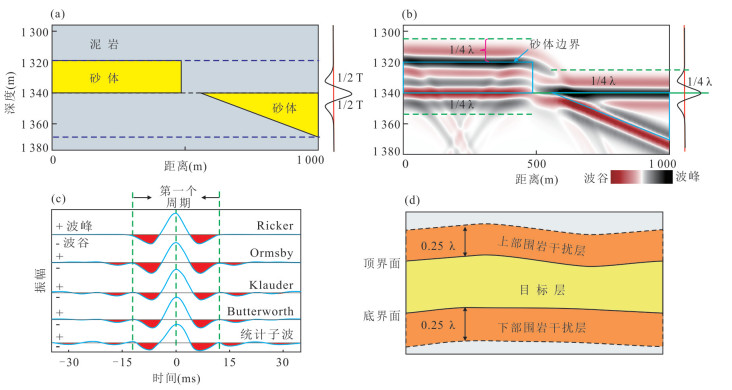
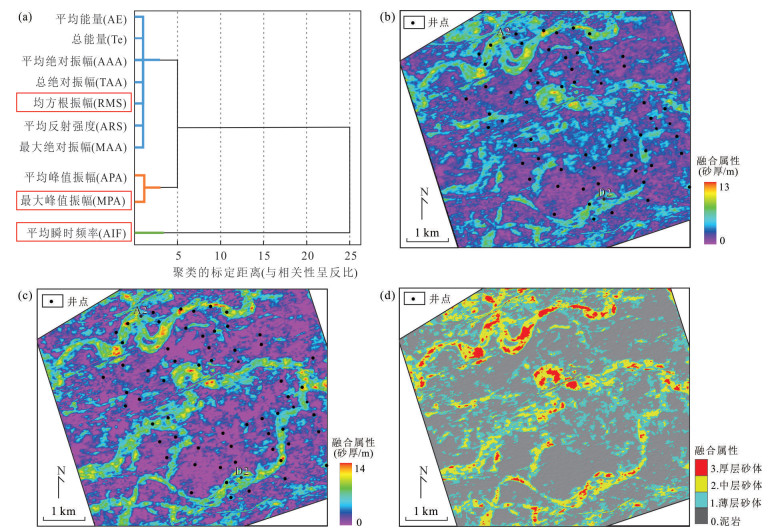

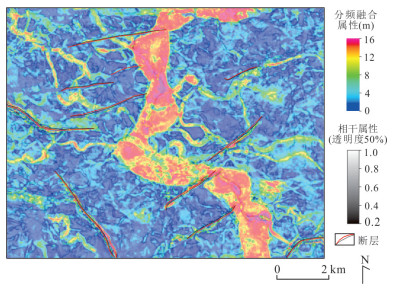
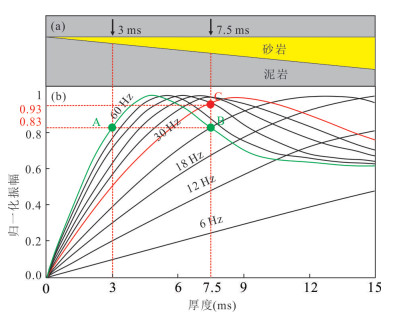
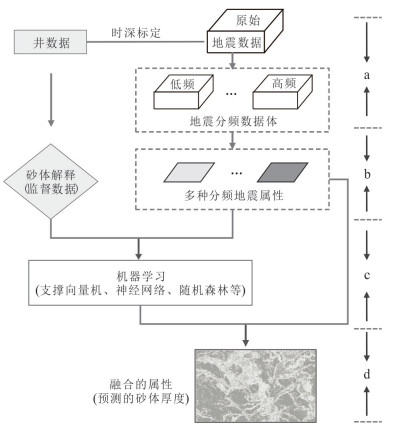
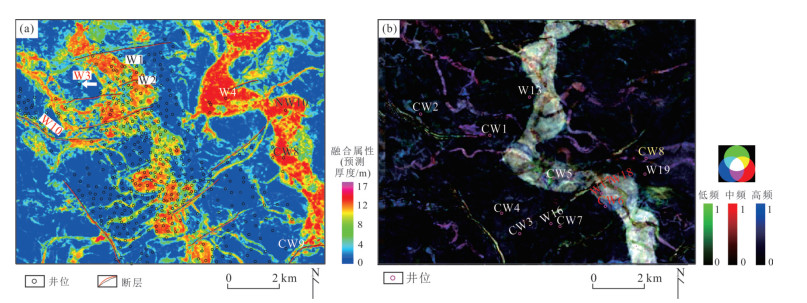
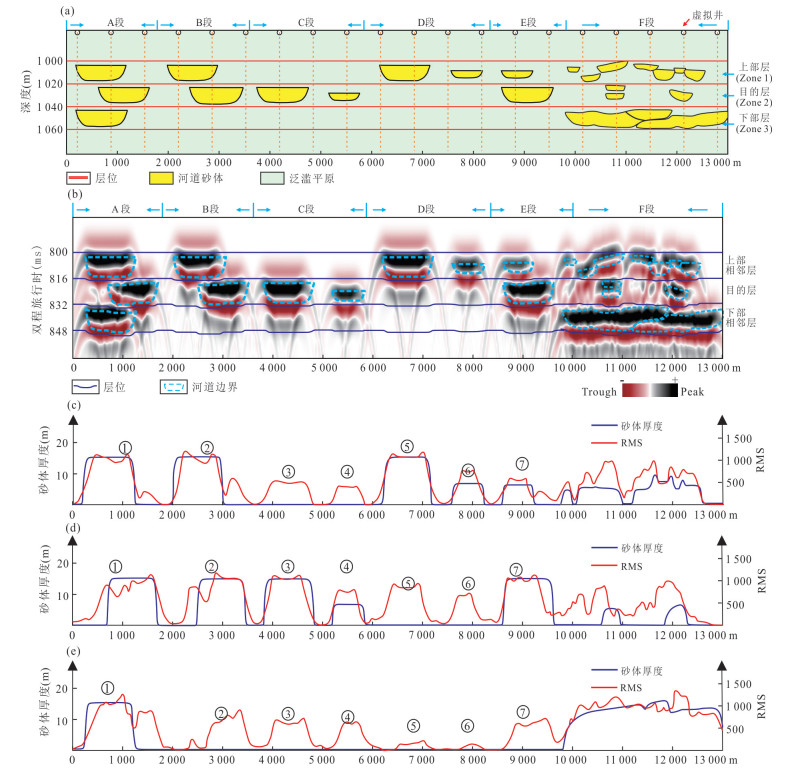
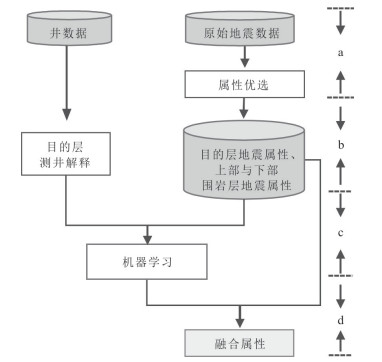
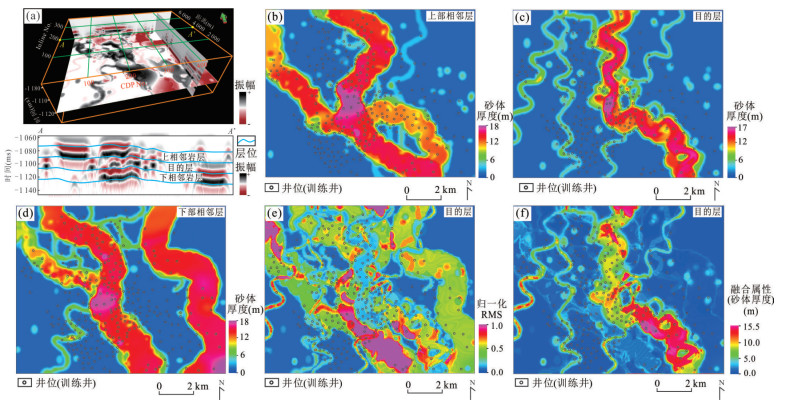
 百度学术
百度学术











